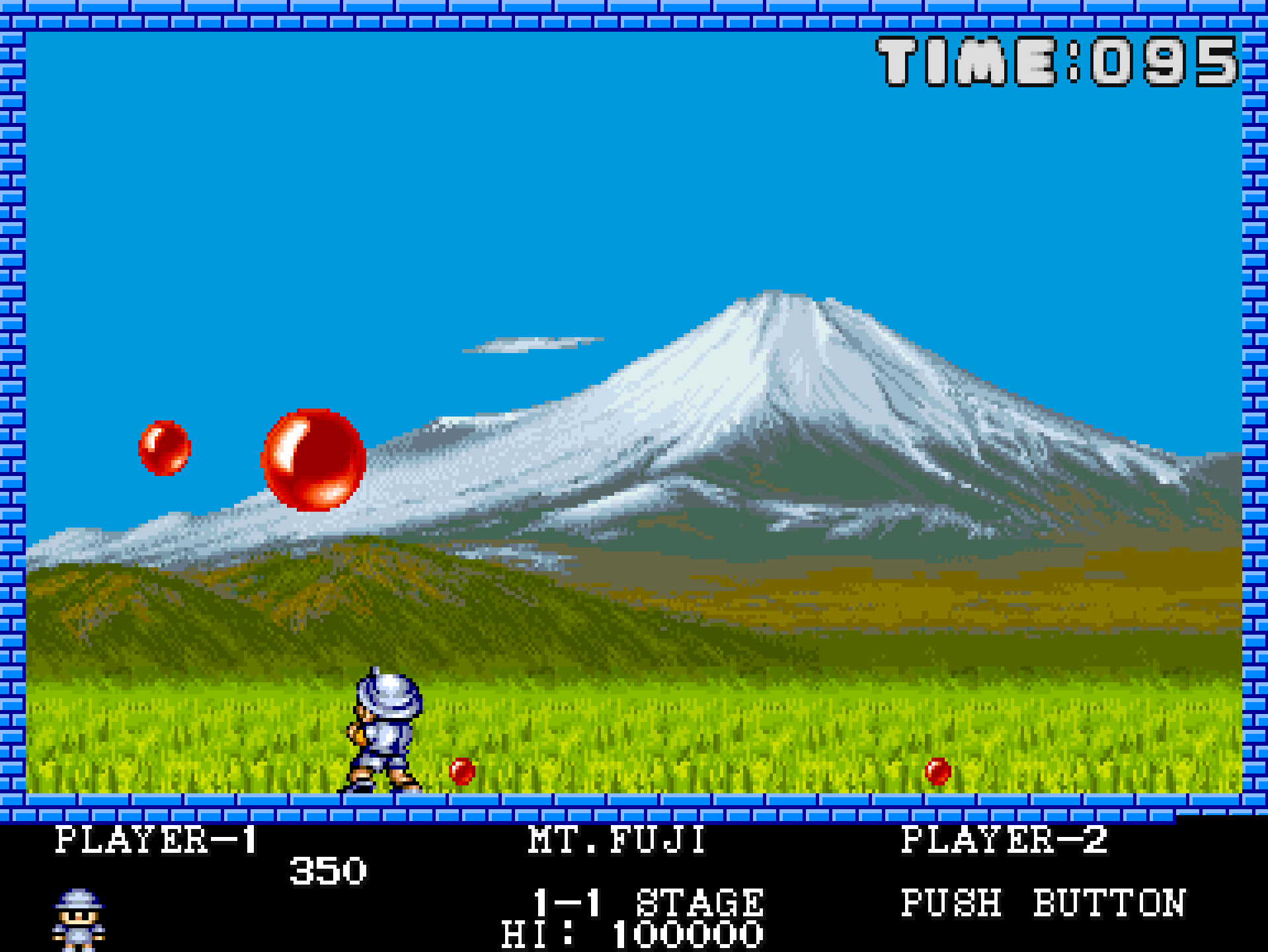Introduction
Released in 1989 by Mitchell Corporation and distributed by Capcom in many regions, Pang (also known as Buster Bros. in North America) is a two-player cooperative arcade game centered around popping bouncing bubbles. With simple but addictive gameplay, globe-trotting stages, and charming visuals, Pang became a breakout puzzle-action hit that spawned sequels and ports across generations.

Development and History
- Developer: Mitchell Corporation
- Publisher: Capcom (International)
- Release Date: 1989
Pang was designed to be accessible, fast-paced, and easy to learn, but increasingly difficult to master. It combines arcade reflexes with a bit of puzzle strategy, as players must decide when and how to break apart bouncing spheres that divide into smaller fragments. The game’s colorful art and world travel theme helped it stand out among arcade offerings of the late ’80s.

Gameplay Video
Gameplay and Mechanics
Core Gameplay
- Objective: Pop all the bouncing bubbles on each stage without getting hit.
- Two-Player Co-op: Players work together to clear screens, making coordination essential.
- Splitting Mechanic: Larger bubbles split into smaller ones when popped, eventually disappearing at the smallest size.
- Weapon Types: Harpoon, double harpoon, and other special items change your popping strategy.
- Power-Ups: Time freezes, shields, speed boosts, and bubble-slowing effects assist in tight spots.
Stage Structure
- World Tour Theme: Each stage represents a famous global location, from Easter Island to Paris to Mt. Fuji.
- Environmental Hazards: Some levels introduce moving platforms, ladders, destructible blocks, and time limits.
Challenges
- Screen Control: Managing the bouncing trajectory of multiple bubble sizes requires quick reaction.
- Timing: Players must time their shots to hit bubbles while avoiding contact.
- Limited Weapon Use: Some weapons have slower cooldowns or reduced range.

Cultural Impact and Legacy
- Global Success: Extremely popular in Europe and Asia, leading to multiple sequels.
- Franchise Growth: Followed by Pang! 3, Super Pang, and Mighty! Pang.
- Home Ports: Released on systems including the Amiga, Atari ST, ZX Spectrum, SNES, and PlayStation.
- Capcom Legacy: Often included in Capcom arcade compilations due to its wide appeal.

Fun Facts
- North American Title: Renamed Buster Bros. for U.S. release to emphasize action over puzzling.
- No Jumping: Unlike most arcade platformers, players cannot jump—everything is based on positioning.
- World Map Progression: Inspired by travel and cultural landmarks to add visual variety.
- Arcade Favorite: Often featured dual joystick setups for two-player cooperative cabinets.

Conclusion
Pang is an arcade classic that thrives on simplicity, reflexes, and charm. Its globe-trotting design, popping mechanics, and cooperative gameplay made it a beloved staple of late ’80s arcades. For players seeking a break from violence-heavy shooters, Pang offers a timeless and family-friendly challenge.

